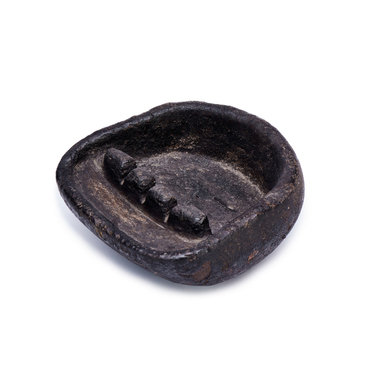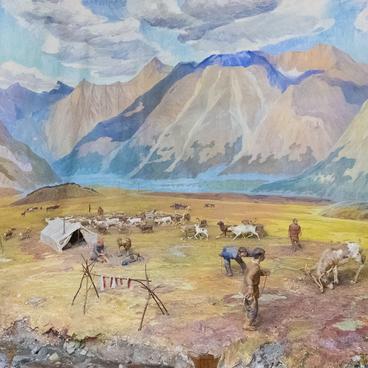This board from the museum collection dates back to the Russo-Japanese War of 1904–1905. It reflects the events related to the Japanese attempts to occupy Kamchatka. On April 21, 1904 the news hit the peninsula that the war with Japan had begun. According to international law, Kamchatka could not be conquered militarily: there were no Russian troops there, as they had been withdrawn in 1855. The Japanese plan was to gradually occupy these territories.
The Petropavlovsk uyezd head, Anton Petrovich Silnitsky, initiated intensive activities immediately after receiving the news of the war. Reserve lower ranks, Cossacks and volunteers were invited to form militia detachments. Silnitsky was determined to defend the peninsula from the enemy. He organized militia detachments, which united the inhabitants of all Kamchatka. The Bolsheretsk, Moroshechnaya, Oblukovinsk, Tigilsk, Petropavlovsk and Ust-Kamchatsk detachments included almost all male population aged between 18 and 40.
Alarms were set up in Avacha Bay, sentries were posted in Zhupanovskaya and Kronotskaya Bays and Cape Lopatka, weapons were distributed to the people, and an outpost was established on the Bolshaya River. Maxim Ivanovich Sotnikov, a supervisor of fisheries and a non-commissioned officer in the reserve, was appointed in charge of the defense of Western Kamchatka.
On June 30, 1904, a Japanese landing force led by a retired lieutenant of the Imperial Navy, Sechu Gunji, disembarked at the mouth of the Ozernaya River, in the immediate vicinity of the villages of Yavino and Golygino. Having plundered Yavino and looted the cattle of the local population, the Japanese returned to their base at the mouth of the Ozernaya River. Not far from the village, they erected a pole with a board declaring that the land belonged to Japan and threatening to kill anyone who would remove the pole.
Having conducted
reconnaissance in the village of Yavino and identified the enemy’s positions,
Maxim Sotnikov tricked Sechu Gunji out for peace talks, during which Gunji was
taken prisoner. Having lost their commander, the raiders left Kamchatka, afraid
to engage in active hostilities with the militia. On Sotnikov’s order, the post
with the board was felled. Then Sotnikov forced Gunji to make an inscription in
the lower right corner of the board, confirming that it had been put up on
Gunji’s order.





